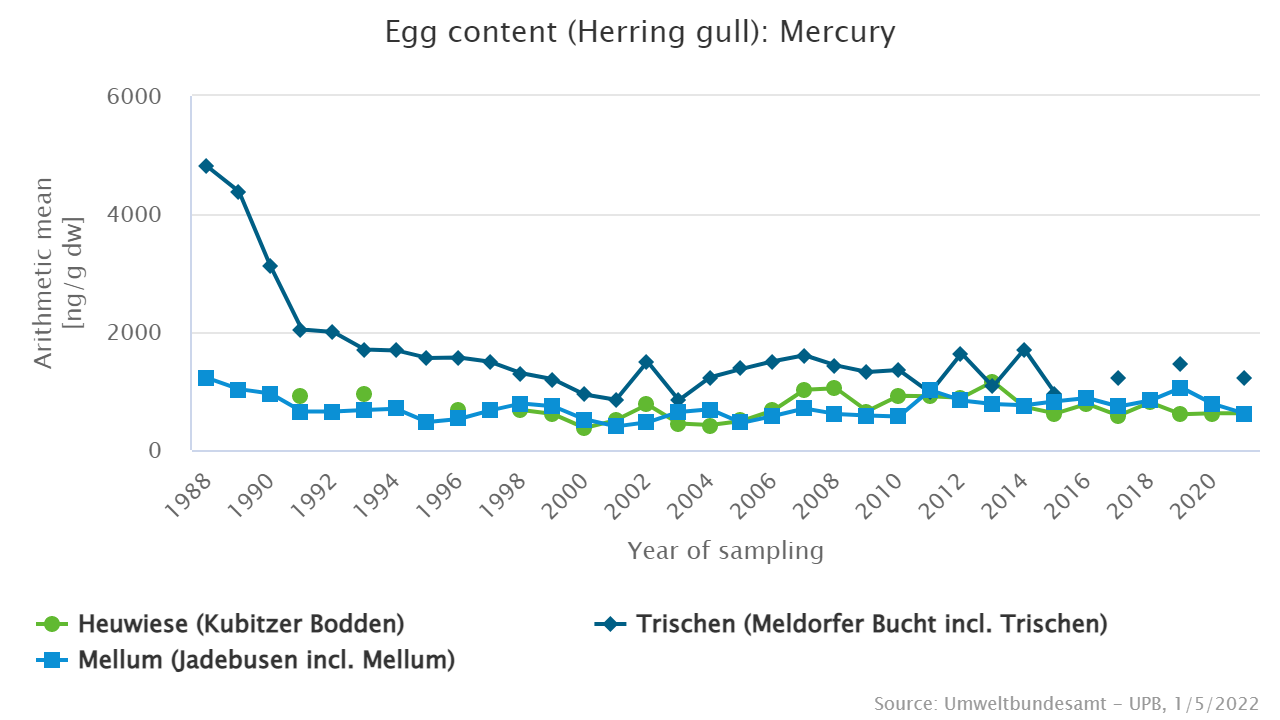Mercury contamination of herring gull eggs from the North and Baltic Sea
Since the late 1980s mercury levels in herring gull eggs from the North Sea have declined considerably. In herring gull eggs from the Baltic Sea, however, mercury has increased slightly.
Mercury in herring gull eggs from the Schleswig-Holstein Wadden Sea (sampling site Trischen) has decreased by about 70% since the late 1980s. A comparable trend is found for eggs from the Lower Saxony site Mellum (approximately 50 % decrease). In contrast, mercury levels in eggs from the Baltic Sea remained more or less constant and even increased slightly in some years.
Overall, mercury concentrations detected in the eggs of herring gulls no longer represent unusually high levels of contamination.

Fig. 1 Total mercury in herring gull eggs from North Sea (Trischen and Mellum) and Baltic Sea (Heuwiese)
Updated at: 2022-01-11
Recommended profiles
Specimen
-
Inshore, the herring gull mainly feeds from the sea: upon fish, mussels, and crabs.
Analytes
-
Naturally occurring highly toxic transition metal, which is liquid at standard conditions for temperature and pressure
Sampling area
-
National Park in the largest brackish water (Bodden) habitat of the world.
-
National park in the world largest connected sand and mud flats.